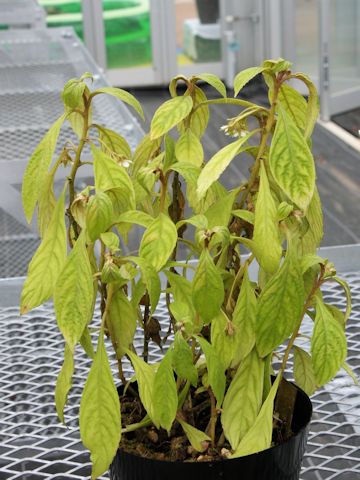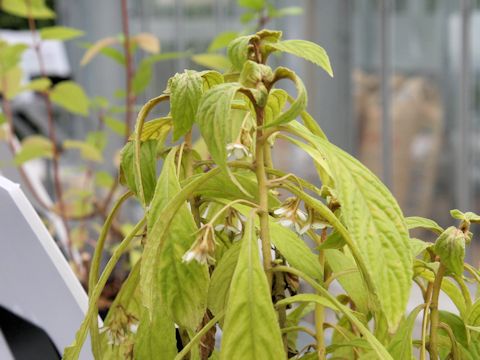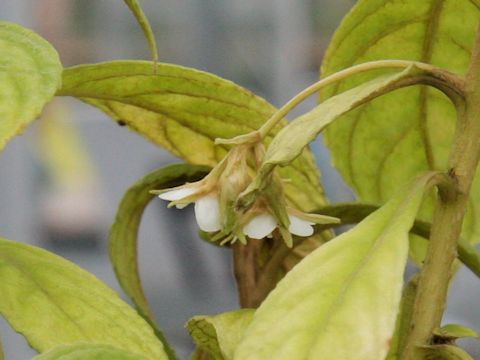 |






|

|
íªÌ켩çäpAtBsɪzµÄ¢Ü·BRnÌÑâk¬¢É¶¦A³ÍRO`TOZ`ÉÈèÜ·BtÍ|âj`©ç|ó·È~`ÅݶµAÉÍsK¥Èª èÜ·BU©çPO²ëAtãü©çaçÈWUÔð¾µA¬³ÈFÌÔð穹ܷBÊÀÍ
`ÌtÊÅAFÉnµÜ·BäpØêÅÍAu¯ÇvB
|

|
C^oRÈ}r\E®ÌíάáØÅAw¼Í Rhynchotechum discolorBp¼Í èܹñB
|

|
The "Yama-biwa-so" (Rhynchotechum discolor) belongs to Gesneriaceae (the African violet family). It is an evergreen shrub that is distributed to the Ryukyu Islands in Japan, as well as Taiwan and the Philippine Islands. This shrub grows in mountain forest edges and stream banks, and can reach 30-50 cm in height. The leaves are oblanceolate to obovate-oblong and arranged in alternate with irregular edges. The sparse cymes are borne at the axils and the small white flowers bloom from June to October. The fruits are globose berries and ripen white. In Taiwanese Chinese, "¯Ç".
|

|
ïé§ÂÎsuÂÎÀ±A¨vÉÄA2012N0721úBeB
|


